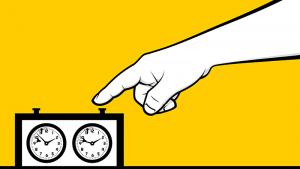
The Knockout Blow
At one time or another, all of us have experienced the agonizing pain of drawing or losing a completely winning position.
One move — one millisecond of imprecise thinking — can nullify hours of hard work and inspired play.
Frequently, players are incapable of converting a decisive advantage not because they lack Karpovian technique, but because they are unable to deliver the knockout punch.
The temptation to avoid complications in a winning position is understandable, but strong players will not go gentle in that good night!
In this article, I would like to examine how grandmasters quash even the most tenacious resistance with a well-timed tactical blow.

First, it is important to recognize that the defender has nothing to lose. Your opponent will do everything in his power to trick you, prolong the game, or pounce on your fatigue. If you see a potentially decisive combination, do not simply let it go in favor of a safer alternative — trust your instincts and calculate it out.
In a recent game against GM Kayden Troff, I missed a crushing sequence in the middlegame, and could have been severely punished as a result.
Notice that 32.Rf3 is hard to make rather than hard to see. Given the position after Black's 31st move as a problem on Tactics Trainer, I would have played Rf3 without hesitation!
My decision to stay away from anything tactical or risky could have easily cost me half a point.
In the next game, try not to repeat my mistake. Several continuations lead to an objectively winning position, but only one removes all doubt.
Georgiev undoubtedly saw 24.Be6, but with every single piece located optimally, he intuited that a grind-it-out endgame was not the best he could do.
Once again, 24.Rxg7+ is an elementary tactic per se, but the inherent appeal of a safer alternative often overrides logical reasoning. Don't let it!
A knockout blow certainly does not have to come in the form of a spectacular combination.

Sometimes, a straightforward developing move or pawn advance can be more effective than the flashiest queen sacrifice. The following game is a case in point.
Vasile could easily read her opponent's intentions after 19.b4, yet she was utterly powerless to do anything about it. Though incredibly prosaic, it was a knockout blow all the same.
To conclude, I will give you a chance to improve upon Anand's play. To successfully deliver the knockout punch -- which Vishy himself overlooked -- you will have to demonstrate both tactical imagination and sharp calculation.

As you can see, the ability to end your opponent's resistance with a knockout blow hinges on many other skills.
By routinely sharpening your tactical vision and intuition, you will exponentially augment your self-confidence at the board.
And self-confidence leads to more knockout blows, and better results!
RELATED STUDY MATERIAL
- Read GM Naroditsky's last article, Bobby Fischer's Beautiful Bishops.
- Watch WIM Alisa Melekhina's video on four early-round knockouts by Tal.
- Fire off some combinations in the Chess Mentor.
- Practice your knockout blows in the Tactics Trainer.
- Looking for articles with deeper analysis? Try our magazine:The Master's Bulletin.






